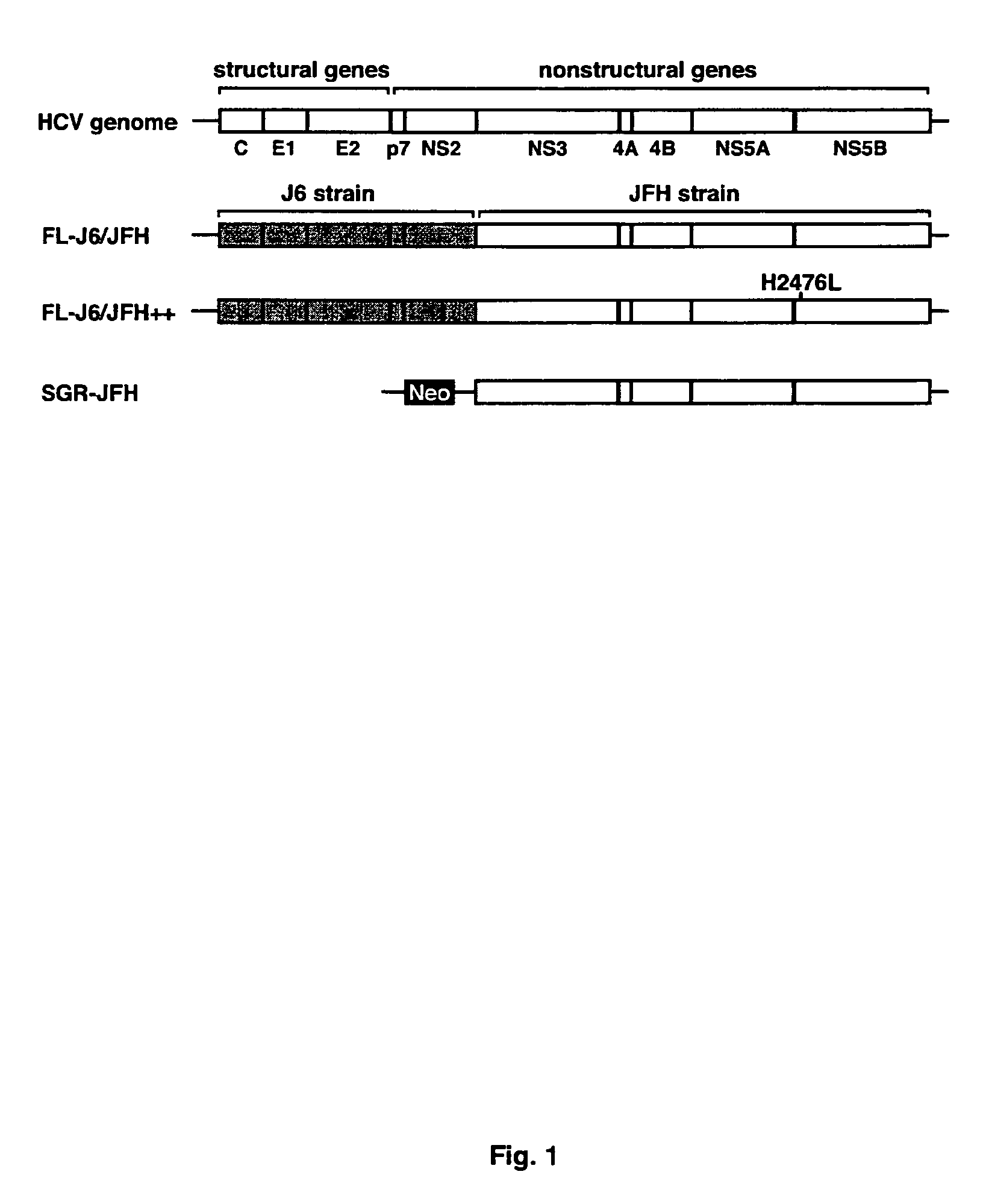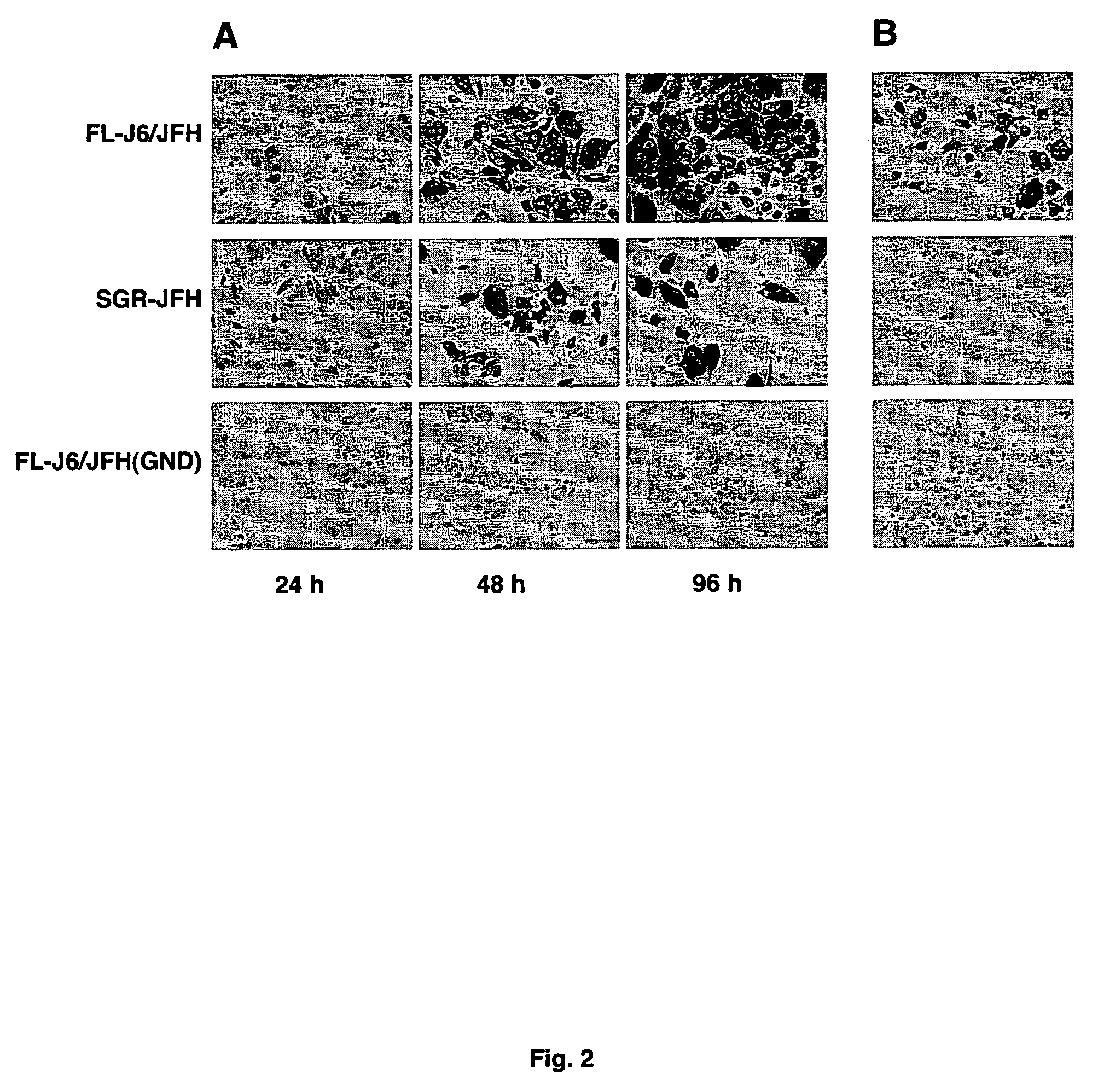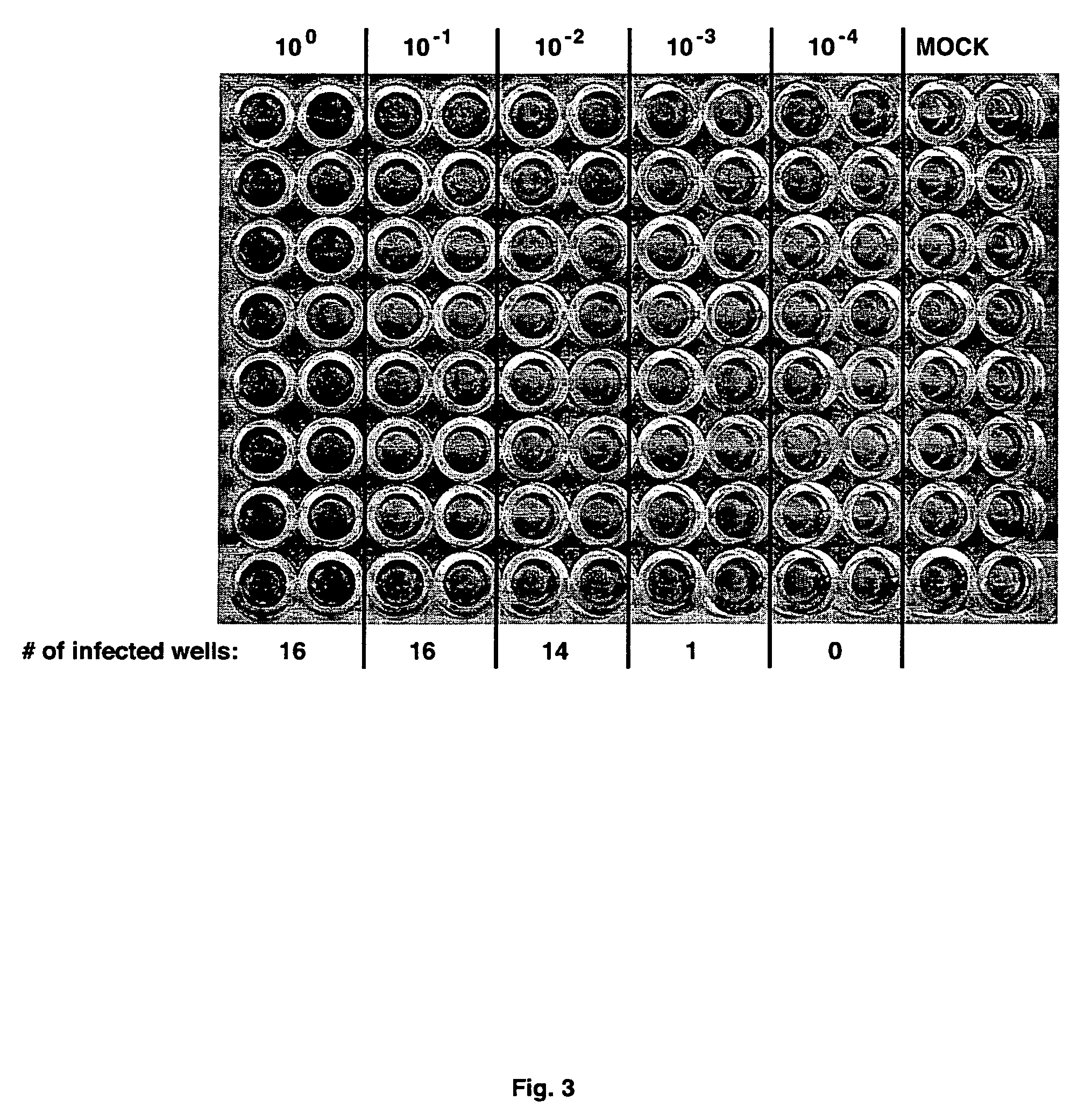Infectious, chimeric hepatitis C virus, methods of producing the same and methods of use thereof
a technology of chimeric hepatitis c virus, which is applied in the field of infectious recombinant hepatitis c virus (hcv), can solve the problems of limited primary hepatocytes, low and variable levels of replication and virus-induced cytotoxicity, and serious hcv drug search and development difficulties, etc., to achieve the effect of improving cell culture growth
- Summary
- Abstract
- Description
- Claims
- Application Information
AI Technical Summary
Benefits of technology
Problems solved by technology
Method used
Image
Examples
example 1
Detection of HCV Replication and Spread Using the Culture System
[0096]The FL-J6 / JFH construct comprises the cloned cDNA of a chimeric HCV genome with the sequence as set forth in SEQ ID No: 1.
[0097]Replication of FL-J6 / JFH or FL-J6 / JFH++ can be monitored by various methods. A standard immunohistochemical staining procedure was adapted to detect NS5A expression in cells by using the 9E10 monoclonal antibody (Dr. Tim Tellinghuisen and Dr. Charles M. Rice). Antibody staining of HCV-positive cells was revealed through the use of a horseradish peroxidase-coupled secondary antibody and diaminobenzidine. As can be seen in FIG. 2A, HCV replication in Huh-7.5 cells transfected with the FL-J6 / JFH or the SGR-JFH subgenomic replicon, was detected, however FL-J6 / JFH (GND), which contained a lethal mutation in the HCV RNA polymerase active site was not detected.
[0098]Cells harboring FL-J6 / JFH secreted infectious virus particles (HCVcc) that were capable of transferring NS5A expression to naïve ce...
example 2
Quantitation of HCV Infectivity
[0101]The procedure for immunohistochemical staining for NS5A has been adapted to determine the infectious virus concentration within samples. In one system, virus-containing samples were subjected to serial 10-fold dilutions (typically, 10−1 to 10−6) in complete growth medium. Each dilution was then used to infect multiple wells of Huh-7.5 cells seeded in 96-well plates. Following 2 or 3 day incubation, the cells are fixed and subjected to immunohistochemical staining for NS5A expression, as above. The assay plate was then scored for the number of infected wells (i.e. at least one infected cell per well) for each dilution (FIG. 3) and the virus titer was then calculated as the 50% end-point tissue-culture infectious dose per ml (TCID50 / ml) according to the statistical method of Reed and Muench (Am. J. Hyg. 27:493-497 (1938)). The sensitivity of this assay was determined by volume of the lowest dilution and the number of replicates tested, and was typi...
example 3
Growth of Virus
[0103]FIG. 4 shows a growth curve of FL-J6 / JFH and FL-J6 / JFH++ following electroporation of Huh-7.5 cells. Both viruses were efficiently released from cells following a 9-12 hour lag phase. Although the kinetics of FL-J6 / JFH release were greater than that of FL-J6 / JFH++, both viruses reached a peak of ≈5×104 TCID50 / ml between 48 and 72 hours post-electroporation.
[0104]Following this initial virus growth phase, virus was continuously produced by transfected cells. Therefore, cells can be passaged as normal and continued to produce virus. Since virus was detected in cells after 5 passages, virus cultures may be conveniently scaled up in this way.
[0105]Additionally, virus can be produced following infection of naïve cells. Typically, cells are infected at a multiplicity of infection (MOI) of less than one to minimize co-infection, washed, and fed with complete growth medium. Virus-containing supernatants are then collected over subsequent days, and infected cells may be ...
PUM
| Property | Measurement | Unit |
|---|---|---|
| pH | aaaaa | aaaaa |
| density | aaaaa | aaaaa |
| densities | aaaaa | aaaaa |
Abstract
Description
Claims
Application Information
 Login to View More
Login to View More - R&D
- Intellectual Property
- Life Sciences
- Materials
- Tech Scout
- Unparalleled Data Quality
- Higher Quality Content
- 60% Fewer Hallucinations
Browse by: Latest US Patents, China's latest patents, Technical Efficacy Thesaurus, Application Domain, Technology Topic, Popular Technical Reports.
© 2025 PatSnap. All rights reserved.Legal|Privacy policy|Modern Slavery Act Transparency Statement|Sitemap|About US| Contact US: help@patsnap.com



